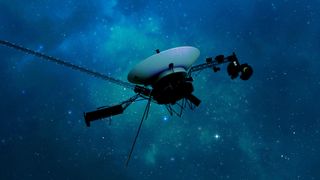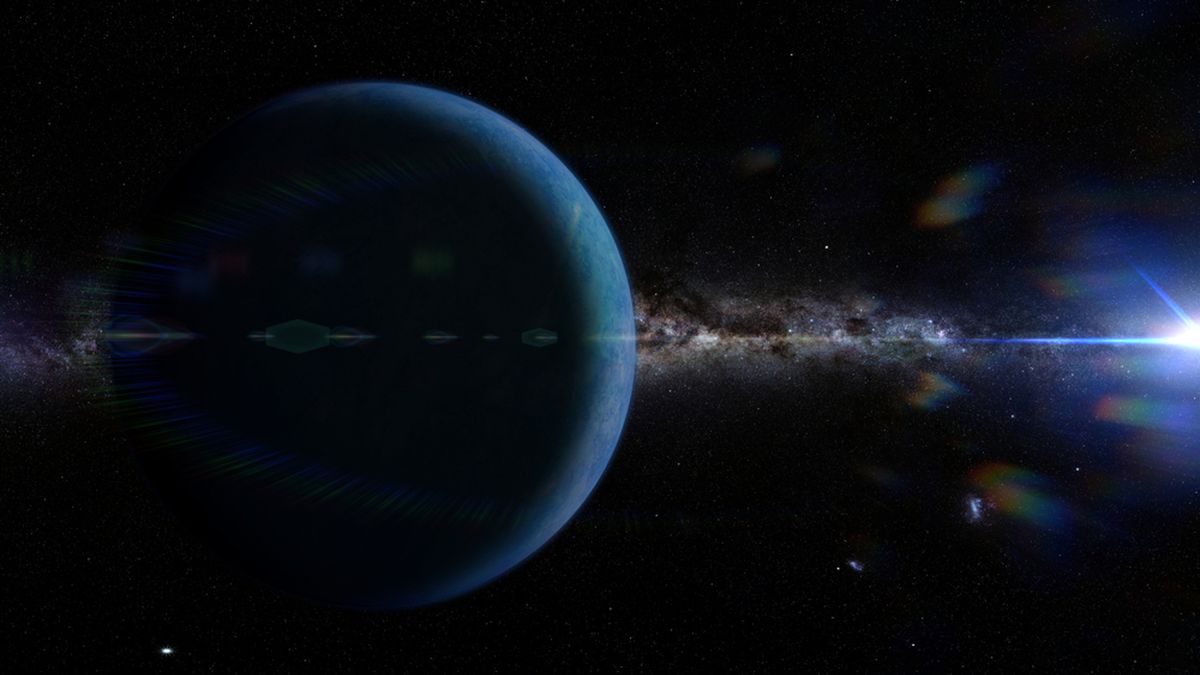Some experts believe that we could be just a few years away from discovering the elusive “Planet Nine” — or ruling out the existence of the hypothetical world for good.
But if we do find it, how long would it take for us to send a spacecraft to the far-flung world? And could humans ever make the trip?
Planet Nine is the name given to a proposed planet supposedly lurking near the edge of the solar system. If it exists, Planet Nine is likely a dark, gas or ice giant planet somewhere between five and 10 times the mass of Earth that circles the sun on a highly elliptical, or stretched, orbit — out of sync with the rest of the planets.
Researchers suspect Planet Nine is out there because around a dozen objects beyond the orbit of Neptune, move as if a large object is tugging on them. However, finding this missing world has proved to be extremely tricky.
But some astronomers believe Planet Nine could be discovered within the next few years once the state-of-the-art Vera C. Rubin Observatory starts to survey the night sky in late 2025.
Related: Elusive Planet Nine could be surrounded by hot moons, and that’s how we’d find it
If Planet Nine is ever detected, space agencies like NASA will want to send a probe to visit the distant world. But first, they will have to plan and get approval for such a mission.
“This will take at least a decade or more,” Andreas Hein, a space systems engineer at the University of Luxembourg, told Live Science in an email. This is mostly because missions have to go through a lengthy and rigorous government selection process, he added.
But this process could be sped up depending on how odd the world appears in initial readings, Manasvi Lingam, a theoretical astrobiologist at the Florida Institute of Technology, told Live Science in an email. “If Planet 9 is anomalous in some respect, there could be more interest in expediting such a mission.”
It is also possible that a private space exploration company, such as SpaceX, could launch missions sooner — potentially as soon as five years after discovery — because they are not hindered by as much bureaucracy, Hein said.
Reaching Planet Nine
Once a probe is sent to Planet Nine, the next question is how long will it take to arrive?
In 2022, Hein, Lingam and part-time astronomer Adam Hibberd attempted to answer this question in a theoretical paper that was posted to the pre-print database arXiv. In this paper, which has not been peer-reviewed, the researchers estimated that it would likely take between 45 and 75 years for a spacecraft akin to NASA’s Voyager probes to reach Planet Nine.
These calculations were based on the assumption that Planet Nine is around 400 astronomical units from the sun on average, or 400 times farther away from the sun than Earth. That’s also around 13 times further away from the sun than Neptune, the farthest known planet in the solar system.
But subsequent studies suggest that Planet Nine’s true average distance from the sun is actually closer to 500 astronomical units. And the most recent survey, which narrowed down the elusive world’s potential hiding place, also hints that the planet could currently be more than 550 astronomical units away, near its farthest point from the sun.
However, these developments don’t dramatically alter the timeline laid out in the 2022 paper, Lingam said. The team’s estimates were “conservative,” meaning that the upper end of their uncertainty range “still seems tenable,” he added.
Pushing boundaries

Seventy-five years may seem like a long time for a one-way trip. But this is quite fast compared to the journeys of existing probes; for example, Voyager 1 — the most distant spacecraft from Earth — has been traveling through space for 46 years and is only around 163 astronomical units from Earth, according to NASA. As a result, a Planet Nine probe would have to travel around three times faster than Voyager 1 to reach Planet Nine in the researcher’s timeframe.
This may seem unlikely but it is possible, Lingam said.
Probes traveling toward the outer solar system must be gravitationally slingshotted around the sun, planets and their moons to propel them across the vast distances involved. Voyager 1’s trajectory was carefully planned to allow it to fly closely past Jupiter, Saturn, Uranus and Neptune, as well as some of their respective moons. To do so, Voyager 1 had to also be slingshotted around objects to slow it down and redirect it to where it needed to go. However, a Planet Nine probe could go as directly as possible straight to the mysterious planet, allowing it to pick up more speed and travel much further in the same amount of time.
Related: Elusive Planet Nine could be an alternative form of gravity masquerading as a planet, study claims
Mike Brown, an astronomer at Caltech who co-proposed the Planet Nine hypothesis in 2016, originally estimated that a probe could potentially get to Planet Nine in as few as 20 years using a similar method. However, it is “difficult” to see how a probe could get to Planet Nine this fast using current technology, Lingam said.
But it might be possible to reach Planet Nine quicker if we could crack more advanced propulsion technologies, such as light sails — giant sails that catch sunlight or lasers to accelerate spacecraft, Hein and Lingam said.
In the 2022 study, the researchers suggested that a light sail could take as little as seven years to reach Planet Nine. However, it could take at least 20 years for light sails to become a reality, the team estimated.
As a result, if we found Planet Nine tomorrow, it would be better to send a current probe than to wait for alternative technologies to become available, Lingam said. “Laser sails can be launched later, if and when they become practical and cost-effective.”
As propulsion systems advance further, it may also be possible to send people to Planet Nine. But probably not anytime soon.
“I am confident that in the far future, humans will be able to visit Planet Nine,” potentially even as they make their way to other stars, Hein said.
